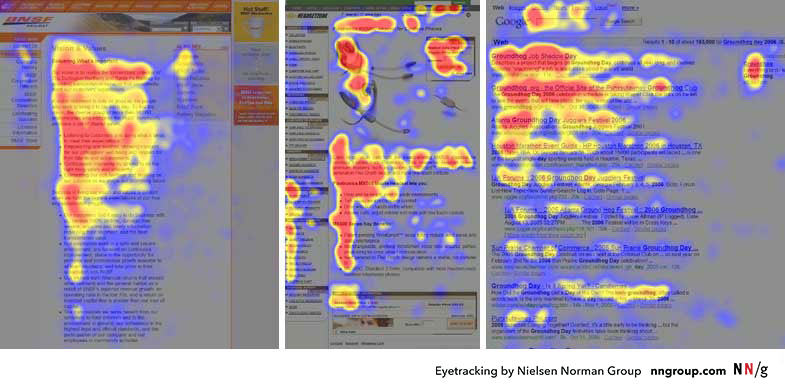By updating blog posts to suit the F-shaped pattern of reading, Semrush was able to increase its non-branded organic traffic by 64%.
Here’s exactly how they did it.
Do you also have a fast marketing tactic that’s delivered great results? Share it with us here.
Table of contents
The goal: Increase SEO traffic to the blog
Semrush’s organic search team wanted to increase SEO traffic to the blog in the most efficient way possible.
They first looked at ways to update their existing blog posts, before investing time into creating new content.
The Fast Marketing tactic: Writing for the F-shaped pattern of reading
The Semrush team updated their blog posts to suit the way people read online: in an F-pattern.
The F-shaped pattern for reading is how web users most often scan blocks of text. They start horizontally along the top part of the content, followed by a shorter horizontal movement a little further down, and finally, vertically down the left side of the text.

Based on this knowledge of user behavior, the Semrush team established guidelines and updated their posts. This included:
- Making introductions short and direct.
- Adding subheadings.
- Putting the most important words at the beginning of every section (BLUF principle).
- Keeping sentences and paragraphs short.
- Using lots of bullet point sections.
- Adding plenty of visual breaks.

Link Building for SEO
The result: +64% non-branded organic traffic per month
Semrush have been updating their blog posts since March 2022, with more than 200 already done. Since then, non-branded organic traffic to their blog has increased by more than 124K visits (+64%) per month.
Their blog posts now appear in the top 3 search results of an additional 7K keywords, and in the top 10 results of an additional 31K keywords. They also show up in 5K more featured snippets.
Why does it work?
- Website users often quickly scan or skim-read pages, instead of reading every word. They typically do this in a pattern that looks like an F.
- This reading pattern applies to page content which has little formatting, such as a block of text.
- Adjusting your content to suit this user behavior makes scanning the page easier and faster for readers who are in a rush to find their answer, which includes most internet and search engine users.
If your content isn’t text-heavy, or you aren’t targeting readers who skim content quickly, you could look at other reading patterns.
How to implement this tactic yourself
- Understand that the F-pattern is not the way you should write. It’s the way people read texts. It should therefore guide where you place your most important information.
- Write headers and introductions that are short and direct. Make sure they address the user’s search intent.
- Pack key information in the first 2 words of each new paragraph, heading, bullet point, or other line of text.
- Use the BLUF (bottom line up front) technique. State the most important information in the opening paragraph, and start every section with the most important point. Only add context, examples, etc., after that.
- Keep sentences and paragraphs short. Aim for 1-3 lines per paragraph and one idea per sentence.
- Structure your text. Use subheadings, bullet points, and plenty of visual breaks.
Meet the specialist behind this tactic
Carlos Silva is a Senior Content Writer at Semrush with over 8 years of experience in writing, content strategy, and SEO. At Semrush, he’s involved in researching, editing, and writing for the English blog. He also owns Semrush’s Educational Newsletter (4M+ subscribers).
Follow Carlos on LinkedIn for more of his insights.




